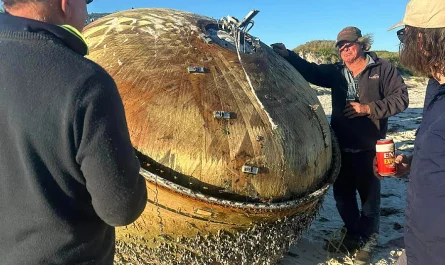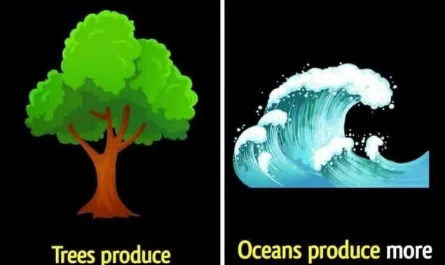Rock art has always been more than decoration. It is a whisper across time—a message from people who lived, wondered, dreamed, and tried to make sense of the world long before modern civilization existed. Yet some rock art sites stand out not only for their beauty, but for the strange sense of familiarity they share despite being oceans and continents apart.
Among these are Fugoppe Cave in Japan, Nine Mile Canyon in Utah, and Gobustan in Azerbaijan. Each site belongs to a different culture, era, and worldview, yet their carvings carry an uncanny set of echoes.

This raises a captivating question:
How did such distant ancient peoples carve such similar ideas into stone?
Coincidence, shared human psychology… or something deeper?
Let’s explore.
Fugoppe Cave (Japan): The Sanctuary of Otherworldly Beings
Hidden on Japan’s northern island of Hokkaido lies Fugoppe Cave, a site that has puzzled archaeologists since its discovery in 1950. Inside the soft tuff walls are nearly 800 engraved figures, forming one of the densest concentrations of petroglyphs in East Asia.
What’s remarkable isn’t just the number—it’s the imagery.
-
Human figures with wings, horns, or exaggerated limbs
-
People wearing elaborate headdresses or masks
-
Boats, possibly symbolic vessels between worlds
-
Animals intertwined with ritual scenes
-
Shapes that resemble celestial or spiritual symbols
The figures often appear otherworldly, as if depicting beings from myths or visions. The cave’s density and consistency suggest it was not a site of casual graffiti, but a place of:
-
ritual gatherings
-
storytelling
-
myth creation
-
perhaps even shamanic rites
Fugoppe feels less like a historical archive and more like a portal into the spiritual imagination of ancient Japan.
Nine Mile Canyon (Utah, USA): The World’s Longest Art Gallery
Across the Pacific and deep into the deserts of Utah lies Nine Mile Canyon, sometimes called “the world’s longest art gallery.” Its sandstone walls are lined with tens of thousands of petroglyphs and pictographs created by the Fremont and Ute peoples over 1,000 years ago.
Here, we find:
-
stylized anthropomorphic figures with abstract bodies
-
bighorn sheep, hunters, and animals central to survival
-
cryptic geometric symbols
-
possible depictions of ceremonies or mythic beings
Many figures have elongated bodies, unusual head shapes, or ornamentation that is not literal—clearly symbolic rather than realistic.
While the imagery is culturally unique, the themes resonate:
-
identity
-
spirituality
-
cosmology
-
the relationship between humans, animals, and nature
It feels like a grand outdoor library, stretching for miles and carrying stories that viewers today are still trying to decode.
Gobustan (Azerbaijan): 20,000 Years of Human Imagination
If Fugoppe is mysterious and Nine Mile Canyon is expansive, Gobustan is monumental.
Located near the Caspian Sea, Gobustan is home to over 6,000 rock engravings spanning up to 20,000 years of human history.
Its carvings include:
-
boats, some strikingly similar to early Scandinavian petroglyphs
-
ritual dance scenes
-
hunting scenes with detailed wildlife
-
human-animal hybrids
-
constellations or celestial symbols
-
feminine figures linked to fertility
The sheer age of Gobustan means it preserves some of the earliest forms of symbolic expression humans ever created. It captures humanity at the dawn of imagination.
And again, we see familiar themes—boats as spiritual vessels, hybrid beings, ritual postures, and depictions of cosmic order.
The Coincidence Question: Are These Similarities Just Human Nature?
Archaeologists tend to explain cross-continental parallels through shared human concerns:
-
survival
-
food sources
-
fertility
-
rituals and social identity
-
the need to pass down knowledge
-
the universal habit of myth-making
-
the urge to leave a mark on the landscape
This makes sense. Humans everywhere hunt animals, face dangers, dream, fear, and seek meaning. So perhaps the similarities are simply:
Different cultures + similar challenges = similar artistic expressions
But is that the full story?
Or Is It Something More?
Alternative interpretations—ranging from scholarly to speculative—offer different possibilities.
1. Archetypal Imagery (Carl Jung’s Theory)
Psychologists suggest that certain symbols are universal because they come from deep structures of the human mind.
Winged beings, hybrid creatures, boats-as-soul-carriers… these show up in cultures with no contact.
Perhaps they arise from shared subconscious archetypes.
2. Early Cross-Cultural Contact
Some researchers note that ancient people traveled more than we assume. Sea routes existed thousands of years before history books suggest. It’s possible that:
-
stories
-
symbols
-
rituals
migrated slowly across continents.
3. Shared Myths Reemerging Independently
A fascinating idea: ancient myths may have diverged early, then reappeared in wildly different societies. Like genetic traits that lie dormant for centuries, certain mythic ideas might surface again and again.
4. The More Speculative View
Certain interpretations suggest:
-
depictions of gods
-
celestial beings
-
shamanic visions
-
or symbolic “visitors” from beyond
While fringe, these theories persist because some carvings look so imaginative and strange that they seem to depict something unusual—and meaningful—to the ancient artists.
What These Sites Teach Us
Regardless of the explanation, one truth stands out:
Humanity has always reached for the same things.
Across Japan, Utah, and Azerbaijan—thousands of years apart—people carved images to:
-
explain the world
-
remember experiences
-
share knowledge
-
honor animals and nature
-
describe spiritual encounters
-
connect to the cosmos
-
express imagination
Rock art is not just archaeology—it’s early philosophy, early religion, early science, and early storytelling.
Each carving is a quiet reminder that our ancestors were not primitive.
They were curious.
They were imaginative.
They were human.
A Shared Human Imagination
Perhaps the similarities between Fugoppe, Nine Mile Canyon, and Gobustan are a coincidence.
Or perhaps they reflect something profound:
A shared human imagination that spans continents and millennia.
The same creative spark that carved images into stone thousands of years ago is the one that still drives us to seek meaning, to ask questions, and to wonder about our place in the universe.
The stones speak.
And even today, we’re still listening.





